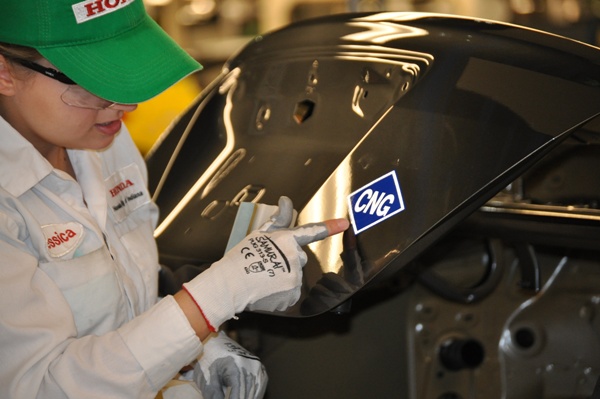Honda To Install Compressed Natural Gas Fueling Station Near Marysville Auto Plant
Site Will Be First Public CNG Fueling Station Located on Honda Property
March 11, 2014 – MARYSVILLE, Ohio

As part of its effort to reduce its global CO2 emissions and minimize the environmental impact of its operations, Honda of America Mfg. (HAM) will install a compressed natural gas (CNG) fueling station on its Marysville Auto Plant property in Marysville, Ohio.
The CNG station, which will be designed, constructed and operated by Trillium CNG, will be the first public CNG station located on a Honda property in North America. The fully automated station will feature three Class 8 dispensers for over-the-road carriers and a separate dispenser for passenger and light-duty vehicles.
"We applaud Honda's global commitment to environmental stewardship and are proud to be their partner on this landmark project," said Mary Boettcher, president of Trillium CNG. "Ohio remains a key state in our infrastructure development plans due to its proximity to several major interstates and shipping lanes. Trillium CNG will be operating 52 public access CNG stations nationally by mid-summer throughout the US."
The CNG station, which will be located on Honda property at the interchange of Route 33 and Route 739, is intended to provide service to those that have already adopted the use of CNG as a fuel, as well as to encourage suppliers and logistical partners to adopt and expand its use.
"A major barrier to our carriers and suppliers adopting the use of CNG as a fuel is the lack of convenient fueling stations close to Honda facilities," said Jim Wehrman, HAM senior vice president. "By providing an accessible fueling option, we hope that our logistical partners will more closely consider the benefits of using CNG. Minimizing our environmental footprint is a vital part of Honda's business strategy and operating philosophy, and we would like to thank our neighbors in Allen Township and the Logan-Union-Champaign Regional Planning Committee for their help in furthering this project."
Through its "green factory" and "green purchasing" programs, Honda is working to minimize the environmental impact of its manufacturing operations, including the upstream impacts of producing and shipping parts for vehicles produced at Honda plants.
Over the past 13 years, Honda plants in North America have reduced waste sent to landfills by 91.9 percent; and in the most recent full fiscal year, ended March 31, 2013 (FY2013) CO2 emissions from the production of Honda and Acura vehicles in North America were down 16.2 percent. In purchasing, improvements to the efficiency of the company's supply-chain logistics allowed Honda and its suppliers to avoid more than 4.3 million miles of truck travel in FY2013.
